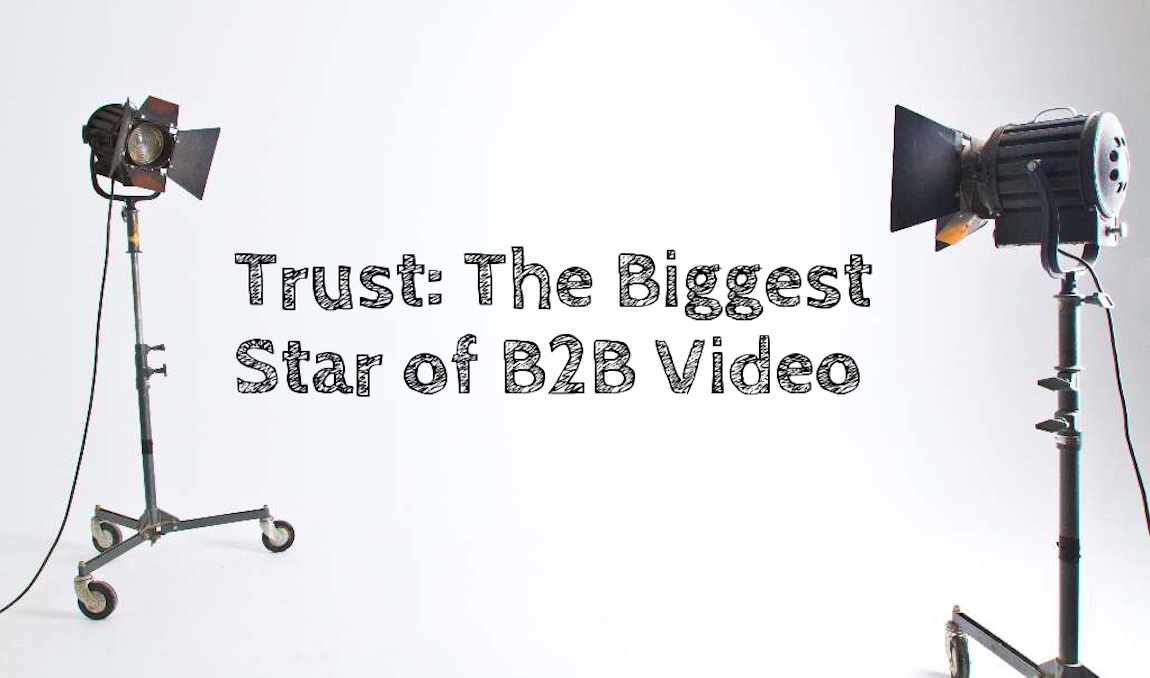Using B2B Video Content To Boost Understanding and Trust in Your Products
by Ben Quinn
How the Brain Processes Video Content
Sell sheets are nice. But when you want to tout your product benefits and truly engage your customers, look to B2B video content. Why? Our brains are wired to understand stories better than bulleted facts. According to a study done by MIT, the brain can process images viewed for as little as 13 milliseconds. By contrast, text is processed at a much slower rate. Using B2B video content allows you to get your message across much faster. Consider why the most successful presentations we experience in business are full of visual information.
An Example of an Effective B2B Product Demo Video
This video from Milwaukee is a good example of a product demonstration video. It takes all the selling points of their M18™ ForceLogic™ Commercial Crimper and Cable Cutter and brings them to life. Hearing and seeing product specs from the mouths of people who use the products is much more effective and memorable than distributing text that promises results, but gives no visual confirmation of the results.
Using Video for Search and Social
So our brains are wired to understand video better than text alone, but a video is only as effective as the number of eyes that see it. When optimized correctly, video can help increase your search rankings. An investment in video also pays off by giving you interesting content for all of your social media outlets. You are more likely to gain traction and engagement by posting a relevant video than a simple link to, say, your new 30-page product catalog.
Video Content Is Like Pizza – Even When It’s Bad, It’s Still Pretty Good.
Your videos do not need to be the next great feature films. Getting meaningful content to the viewer is much more important than the quality of the recording. Research shows that people are more put off by videos that don’t explain a product or service clearly than by poor quality design. That’s not to say you shouldn’t make a piece worth watching. But relatable content trumps Hollywood polish.
Check out this video series created by etrailer.com. They don’t use expensive on-screen talent or high tech animations, just clear useable information that is super helpful if you are looking to install a trailer hitch on a 2015 Nissan Frontier. They set up a simple logo backdrop and created hundreds of videos with different truck models, so that when a potential customer searches for “how to install a trailer hitch on my [your vehicle here],” they are the first option that comes up. This video series allows them to both build awareness of their product offerings, and give customers confidence in how easy it is to use their products. This method of marketing also strengthens the sense of trust with the company. The eyes don’t lie; people love to see products in action instead of simply taking the company’s word for it.
In conclusion, there are many benefits to making video content a key part of your marketing strategy. It promotes greater understanding of your product offering while also building trust in your products and brand in general. With video recording devices and internet platforms being more accessible than ever before, a small marketing budget can still produce large returns with this dynamic medium. Put some money behind these videos, and you have a platform that can both elevate your brand and leave your potential customers with a memorable experience.
Continue ReadingB2B Monday Myth: Content Needs No Gatekeeper
by MGB2B
The Myth: Content Needs No Gatekeeper
The Truth: If No One Is Monitoring Your Content, That’s a Recipe for Trouble
An interesting thing happened the other day. I was reading a blog post from one of my most trusted resources for insightful content. I recognized instantly that the advice they were giving was bad advice. And to make matters worse, it appeared to be a guest writer trying to sell a product. But it wasn’t labeled as “sponsored content.” All it took was one article, and I began to question the credibility of the organization posting it. This is a company that I have been turning to for insights for several years now.
Now I had assumed they had someone – perhaps even a team of people – monitoring their content. But this made me wonder: do they have a Gatekeeper?
To be fair, all of us have lapses in judgment here and there. So it may just be a Gatekeeper who made a mistake. The lesson out of it is this: all content needs a Gatekeeper – and a good one.
Here Is What You Should Look for in Your Content Gatekeeper:
- They Can Proofread. While typos seem to happen more and more these days, it’s still important to make sure your content is not riddled with typos and grammatical errors.
- They Can Fact-Check. Proofreading for grammar is one thing. Proofreading for accuracy is another. This is particularly important for content like blog posts, which are often contributed by multiple people from different departments within your company. Or even outside sources, whether freelance writers or experts in your industry.
- They Can Filter. A Content Gatekeeper shouldn’t only be good at editing copy. They should also be able to determine whether the content that’s been created is right for the brand. In the example above, the guest writer contributed copy that put the credibility of the brand in jeopardy. The Gatekeeper needs to be able to filter out this type of content. They should also be able to guide contributors to alter their content so that it resonates with the audience (and is truly helpful to readers).
- They Know a Little about SEO. If your B2B content is going to live online, it needs to be optimized for search so that prospects can find it. This either means your Gatekeeper knows how to do SEO, or you have an internal SEO person on staff who can look at all content before it goes live and is distributed to your customers and prospects.
Appointing a Gatekeeper is no easy task. But it may be one of the most important – and often overlooked – content marketing tips you should heed. When the credibility of your brand is at stake, it should be a no-brainer.
Continue Reading


